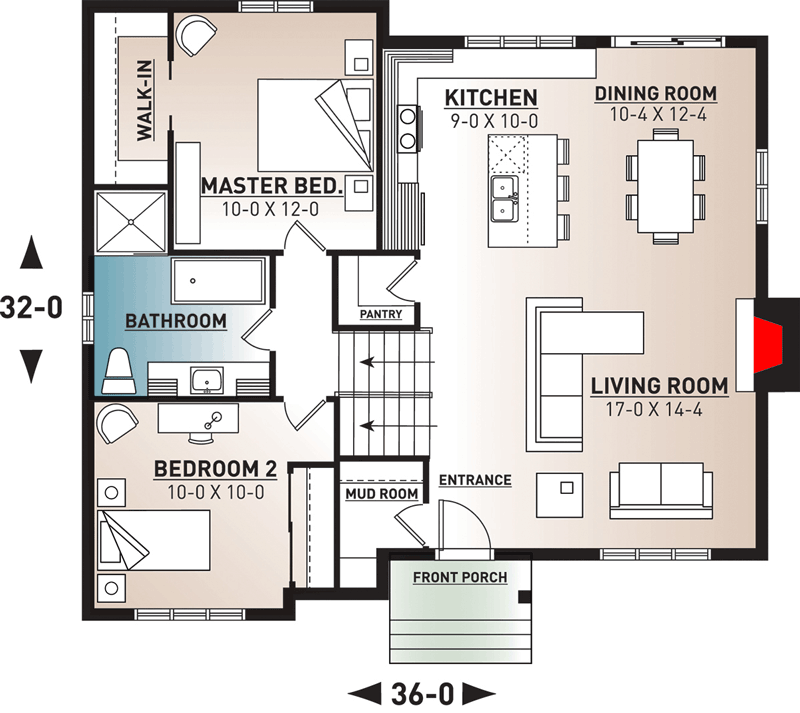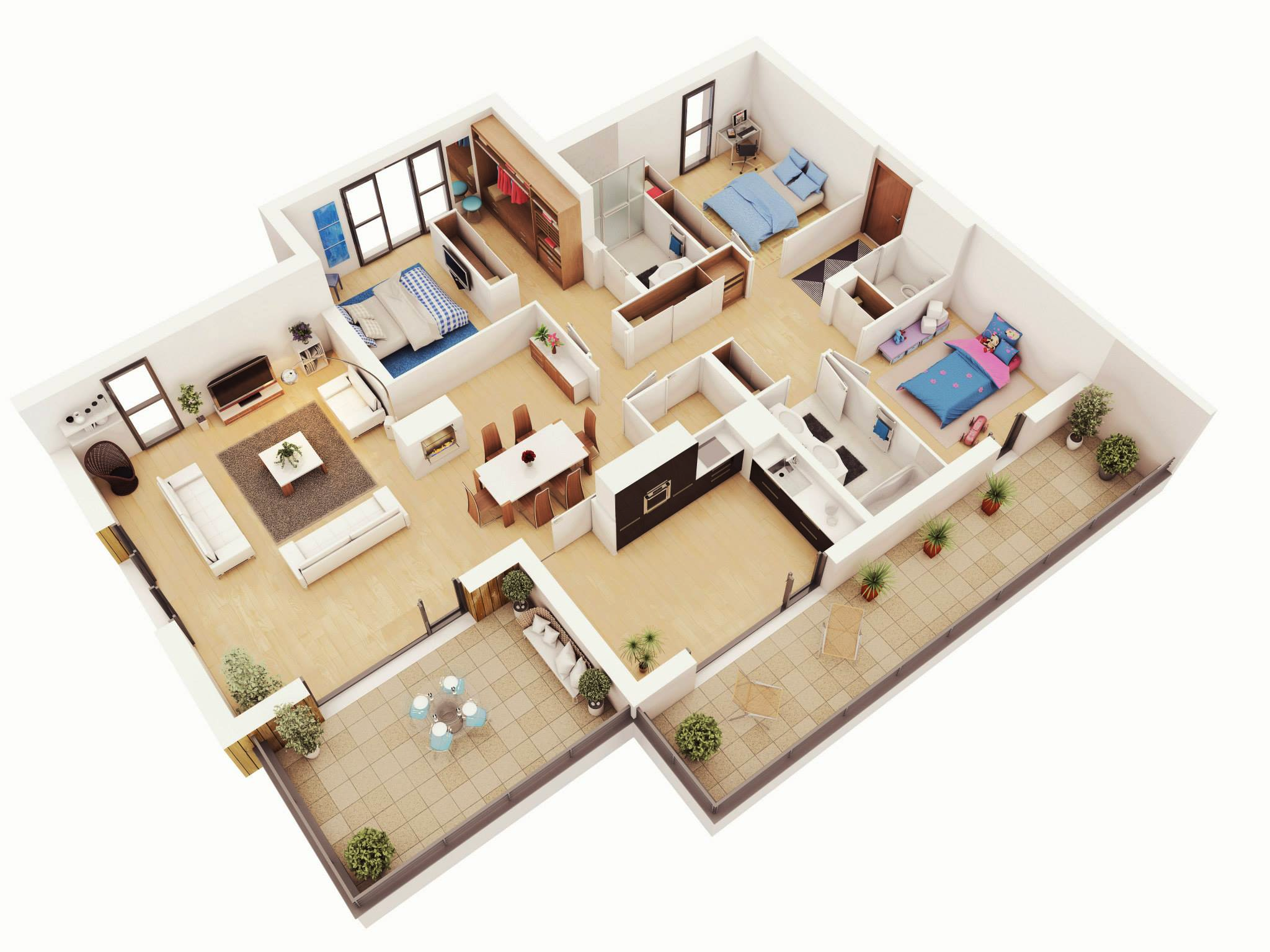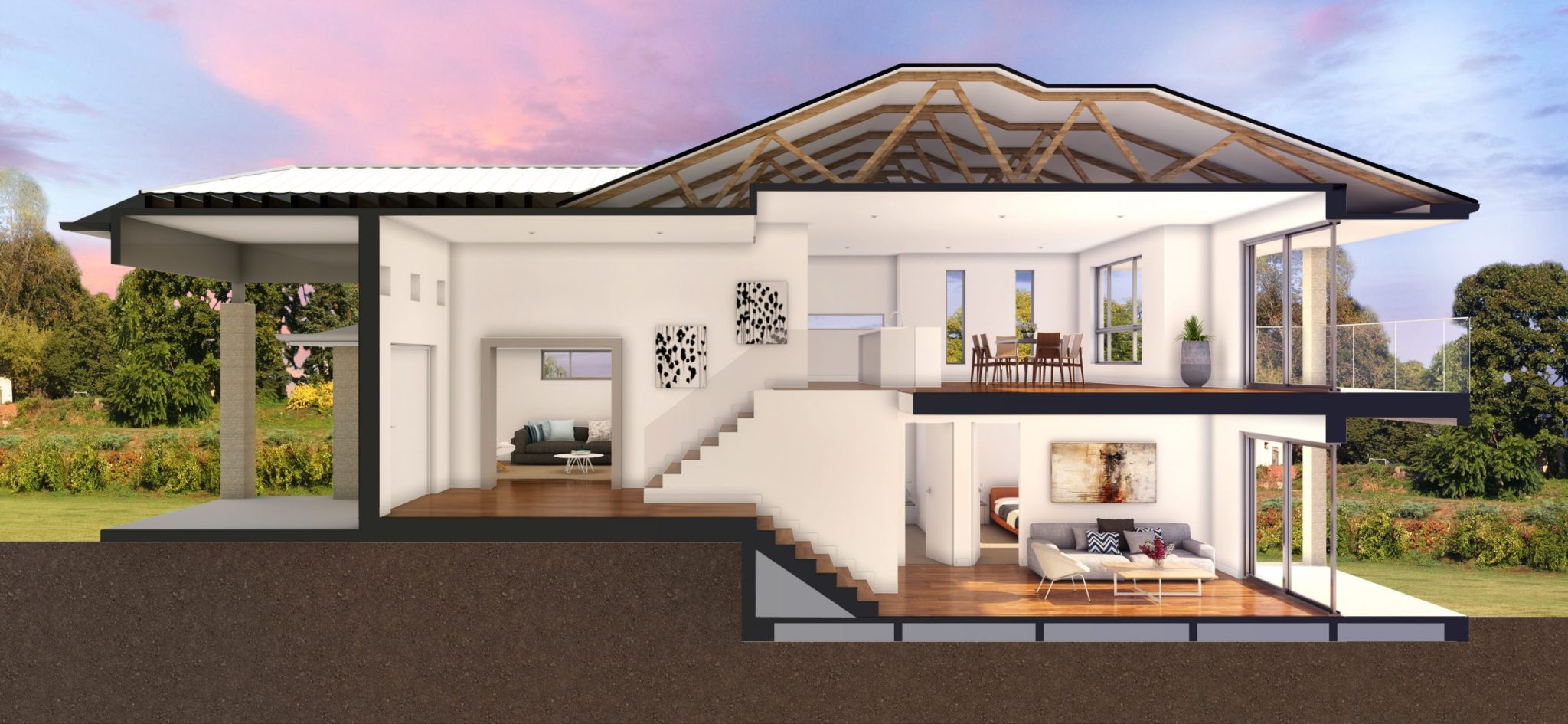Understanding Split-Level Floor Plans: Split Level Floor Plans 3 Bedroom

Split-level homes are a popular architectural style that offers a unique combination of functionality and visual appeal. These homes are characterized by their distinct levels, typically separated by a few steps, creating a sense of openness and spaciousness.
Split-level floor plans are particularly well-suited for families with children, as they offer a sense of privacy and separation between different living areas. The staggered levels allow for distinct zones for various activities, such as a quiet study area, a lively playroom, or a cozy family room.
Advantages of Split-Level Homes
Split-level homes offer several advantages that make them attractive to homeowners. These advantages include:
- Increased Natural Light: The staggered levels often create more windows, allowing natural light to flood into different areas of the house. This can create a brighter and more welcoming atmosphere.
- Improved Ventilation: The design of split-level homes often incorporates open spaces between levels, allowing for better air circulation and ventilation.
- Flexibility in Layout: The flexibility of the split-level design allows for different configurations to suit various needs and preferences. For example, a large family might prefer a layout with separate living areas for children and adults, while a smaller family might opt for a more open plan.
- Unique Architectural Style: Split-level homes offer a distinctive architectural style that can add curb appeal and character to a neighborhood.
Disadvantages of Split-Level Homes
While split-level homes offer several advantages, there are also some disadvantages to consider:
- Potential for Limited Privacy: The open spaces between levels can sometimes compromise privacy, especially if bedrooms are located on different levels.
- Challenges with Accessibility: The stairs between levels can present challenges for people with mobility issues or young children.
- Higher Construction Costs: Split-level homes often require more complex construction techniques, which can result in higher building costs compared to single-story homes.
Types of Split-Level Configurations
Split-level homes come in various configurations, each with its unique characteristics. Some common types of split-level homes include:
- Raised Ranch: The most common type of split-level home, the raised ranch features a main level with the living room, dining room, and kitchen, while the bedrooms are located on a lower level. This configuration offers a sense of separation between living and sleeping areas, and the raised main level often provides views of the surrounding area.
- Tri-Level: A tri-level home features three distinct levels, with the main level often containing the living room, dining room, and kitchen. The upper level typically includes bedrooms, while the lower level may house a family room, laundry room, or other utility areas. This configuration provides a sense of hierarchy and allows for different zones within the home.
- Bi-Level: A bi-level home features two distinct levels, typically with the living areas on the main level and the bedrooms on a lower level. This configuration offers a more compact design than a tri-level home and is often suitable for smaller families or individuals.
Designing a 3-Bedroom Split-Level Floor Plan

Designing a split-level floor plan for a 3-bedroom home involves a careful consideration of space allocation, flow, and functionality. This type of design offers a unique blend of openness and privacy, making it an attractive option for families seeking a balance between shared living areas and individual retreats.
Bedroom Placement
The placement of bedrooms in a split-level home is crucial for maximizing privacy and creating a sense of separation. In a typical 3-bedroom split-level plan, the bedrooms are often located on the upper level, away from the main living areas. This provides a peaceful and quiet atmosphere for sleeping and relaxation. The master bedroom is typically the largest and often features an en-suite bathroom and walk-in closet. The other two bedrooms can be designed to accommodate children, guests, or a home office, depending on the family’s needs.
Bathroom Placement, Split level floor plans 3 bedroom
The placement of bathrooms in a split-level home is also important for convenience and privacy. In a 3-bedroom split-level plan, a full bathroom is typically located on the upper level, serving the bedrooms. This bathroom can be centrally located for easy access or situated near the master bedroom for increased privacy. In some cases, a half-bathroom may be included on the lower level, near the living areas, for guests or family use.
Living Area and Kitchen Placement
The living area and kitchen are typically located on the lower level of a split-level home, creating a central hub for family gatherings and entertaining. The living area can be designed with a large open floor plan, allowing for easy movement between the kitchen, dining area, and living room. The kitchen is often located adjacent to the dining area, providing a convenient space for preparing and serving meals.
Basic Layout Example
Here is a basic layout for a 3-bedroom split-level floor plan:
| Level | Room | Dimensions | Description |
|---|---|---|---|
| Upper Level | Master Bedroom | 14′ x 16′ | Includes en-suite bathroom and walk-in closet. |
| Upper Level | Bedroom 2 | 12′ x 12′ | Can be used as a guest room or home office. |
| Upper Level | Bedroom 3 | 12′ x 12′ | Can be used as a children’s room or guest room. |
| Upper Level | Bathroom | 8′ x 10′ | Includes a bathtub, shower, and vanity. |
| Lower Level | Living Room | 16′ x 20′ | Open floor plan with large windows for natural light. |
| Lower Level | Kitchen | 12′ x 14′ | Includes a large island, ample counter space, and a pantry. |
| Lower Level | Dining Area | 10′ x 12′ | Adjacent to the kitchen, with room for a table and chairs. |
| Lower Level | Half Bathroom | 5′ x 7′ | Includes a toilet and sink. |
Split-Level Floor Plan Styles
Split-level floor plans can be designed in a variety of styles, from traditional to contemporary.
* Traditional split-level homes often feature classic architectural details, such as wood paneling, crown molding, and fireplaces. The exterior may include brick or stone accents and a pitched roof.
* Contemporary split-level homes typically feature clean lines, open floor plans, and large windows. The exterior may include materials such as stucco, metal, or glass.
* Farmhouse split-level homes often feature rustic elements, such as exposed beams, wood floors, and stone accents. The exterior may include a porch or wrap-around deck, and the roof may be a gable or hip style.
Optimizing Space and Functionality

Split-level homes, with their unique vertical design, present both challenges and opportunities when it comes to maximizing space and functionality. The key is to utilize the inherent advantages of the layout, such as the separation of living areas and the potential for creative storage solutions, while addressing the potential limitations, such as limited floor space on each level.
Maximizing Storage and Functionality
Split-level homes often have limited floor space on each level. However, this layout offers unique opportunities to maximize storage and functionality. By strategically placing built-in storage solutions and utilizing vertical space, you can create a home that is both functional and aesthetically pleasing.
- Under-Stair Storage: The space beneath the stairs is often wasted. Consider building custom storage solutions, such as cabinets, shelves, or drawers, to maximize this area. This can be used for storing items that are not frequently accessed, such as seasonal decorations, old books, or extra linens.
- Built-in Shelving: Utilize built-in shelving in hallways, living rooms, and bedrooms to maximize storage space while adding a decorative element to the room. Open shelving can be used to display books, plants, or decorative items, while closed shelving can be used for storing items that need to be hidden away.
- Murphy Beds: In smaller bedrooms or guest rooms, consider using a Murphy bed. This space-saving solution allows you to transform a small room into a multi-functional space that can be used as a home office or playroom during the day and a bedroom at night.
- Multi-Purpose Rooms: Designate a room as a multi-purpose space. For example, a home office can double as a guest room by incorporating a pull-out sofa bed or a Murphy bed. This allows you to maximize the use of each room while still providing a dedicated space for specific functions.
Incorporating Natural Light
Natural light is essential for creating a welcoming and comfortable home. Split-level homes, with their multiple levels and often smaller windows, can pose a challenge when it comes to maximizing natural light. However, with strategic planning, you can create a home that is bathed in natural light.
- Skylights: Skylights are an excellent way to bring natural light into a split-level home, especially into lower levels that may have limited window space. Skylights can be placed in the ceiling of living rooms, kitchens, or bathrooms to create a brighter and more inviting atmosphere.
- Lightwells: A lightwell is an open shaft that allows natural light to penetrate deeper into the house. This is particularly useful for homes with a lower level that may have limited natural light. A lightwell can be incorporated into the design of the house or added as a renovation project.
- Large Windows: Utilize large windows on upper levels to maximize natural light. Large windows can create a sense of openness and bring in more natural light than smaller windows.
- Mirrors: Mirrors can reflect light, making a room appear larger and brighter. Strategically placed mirrors can enhance the natural light in a room, especially in areas that may have limited natural light.
Staircases and Open Spaces
Staircases and open spaces are integral elements of a split-level design. They create a sense of flow and connection between the different levels, while also offering opportunities for design and functionality.
- Open Stairwells: Open stairwells allow light to flow freely between the levels, creating a brighter and more spacious feel. They can also be used as a focal point in the design of the home.
- Under-Stair Landing: The space under the stairs can be used to create a small landing area, which can be used as a reading nook, a small office, or a play area for children.
- Balustrades: Choose balustrades that are both aesthetically pleasing and functional. Balustrades can be made from a variety of materials, such as wood, metal, or glass. They should be strong enough to provide support while also allowing for a sense of openness.
- Staircase Lighting: Proper lighting is essential for a safe and functional staircase. Consider using a combination of overhead lighting and accent lighting to create a well-lit and welcoming space.
Sample Floor Plan: 3-Bedroom Split-Level Home with Home Office/Playroom
This sample floor plan showcases a 3-bedroom split-level home with a dedicated home office or playroom. The home office is located on the lower level, accessible via a staircase from the living room. The lower level also includes a family room and a full bathroom. The upper level features three bedrooms, a full bathroom, and a hallway that leads to a balcony overlooking the backyard.
- Lower Level: Family Room, Home Office/Playroom, Full Bathroom, Storage Closet
- Mid-Level: Living Room, Dining Room, Kitchen, Half Bathroom
- Upper Level: Master Bedroom, Bedroom 2, Bedroom 3, Full Bathroom, Balcony
Split level floor plans 3 bedroom – Split-level floor plans in a 3-bedroom home often offer a unique blend of privacy and openness. Imagine a master suite tucked away on a higher level, while the other bedrooms enjoy a more communal space on the lower floor. This separation can be especially appealing for families, offering both shared living areas and individual retreats.
For a luxurious escape with this type of floor plan, consider a old Key West resort 3-bedroom grand villa , where you can enjoy the distinct levels while surrounded by the beauty of the Florida Keys. Split-level floor plans can also be a great way to maximize space and light in a smaller home, making them a versatile option for various lifestyles.
Split level floor plans for a 3-bedroom home offer a unique blend of openness and privacy. The staggered levels can create a sense of spaciousness, particularly when designing a family-friendly layout. If you’re looking for a similar feeling on vacation, consider a 3 bedroom suite hotel – they often feature separate living areas, perfect for relaxing and enjoying time together.
Back at home, the split level floor plan allows for distinct zones within the 3 bedrooms, providing individual spaces for each family member.